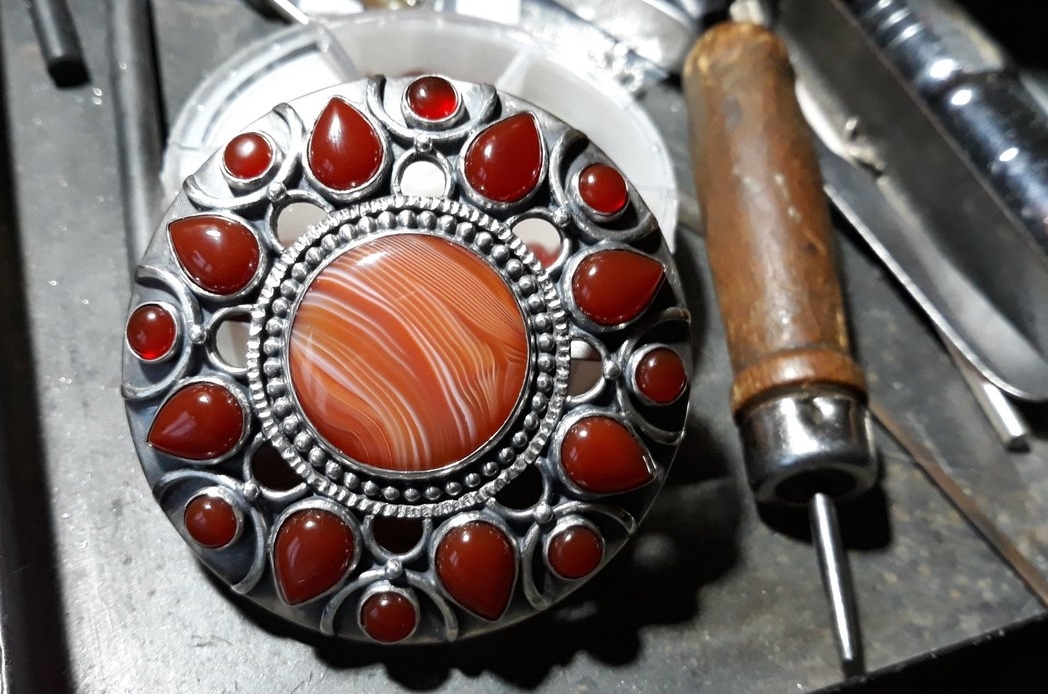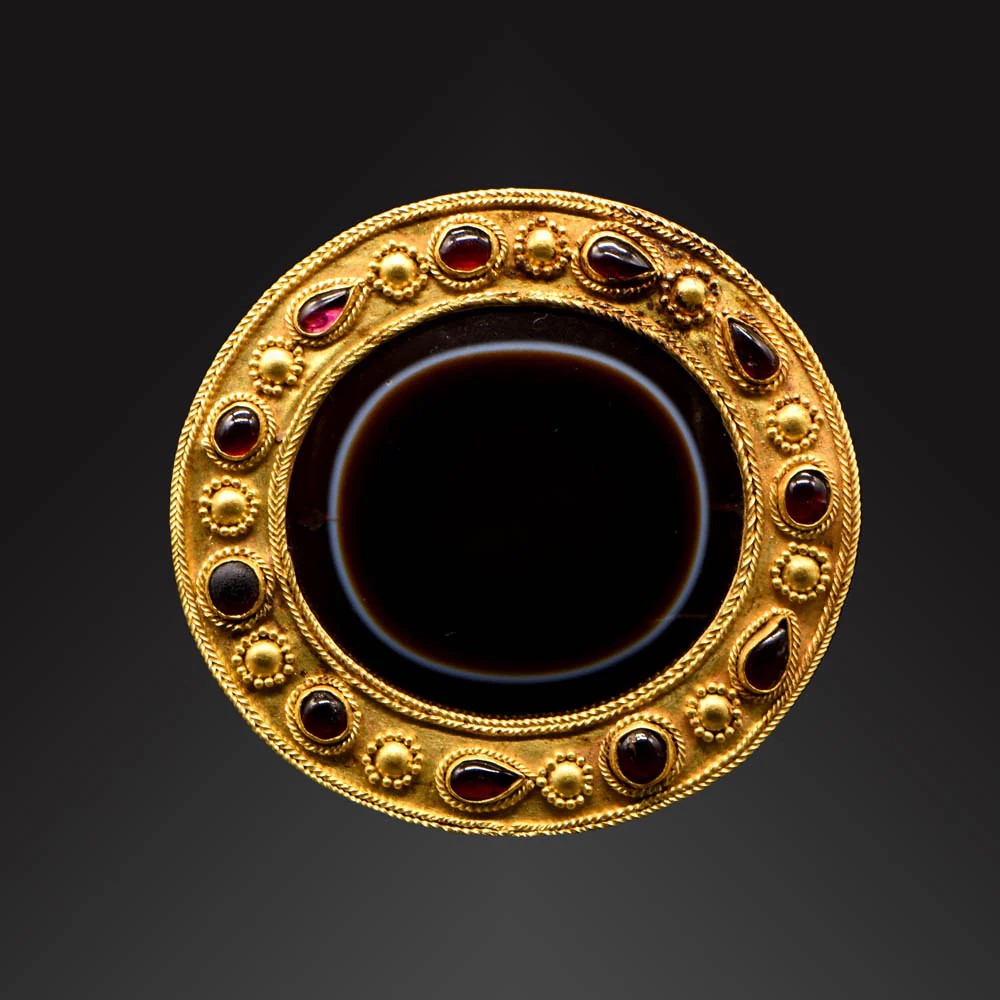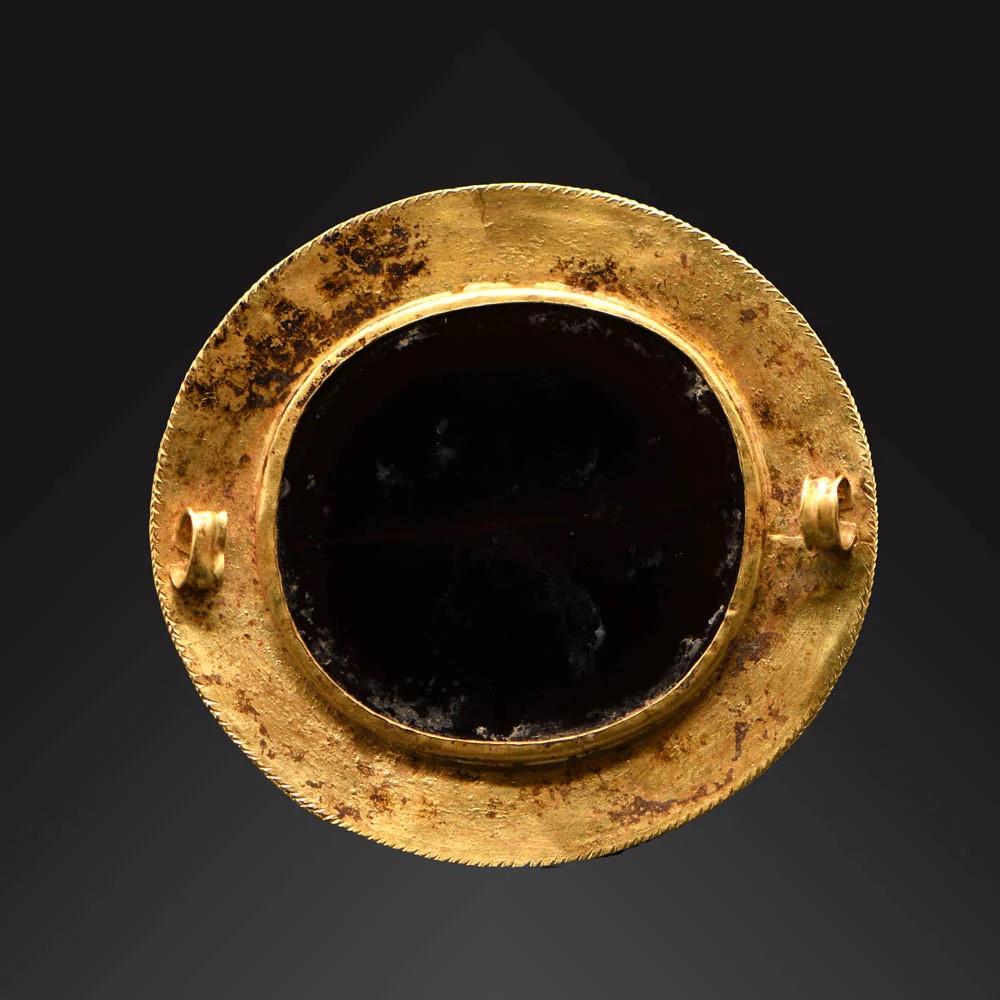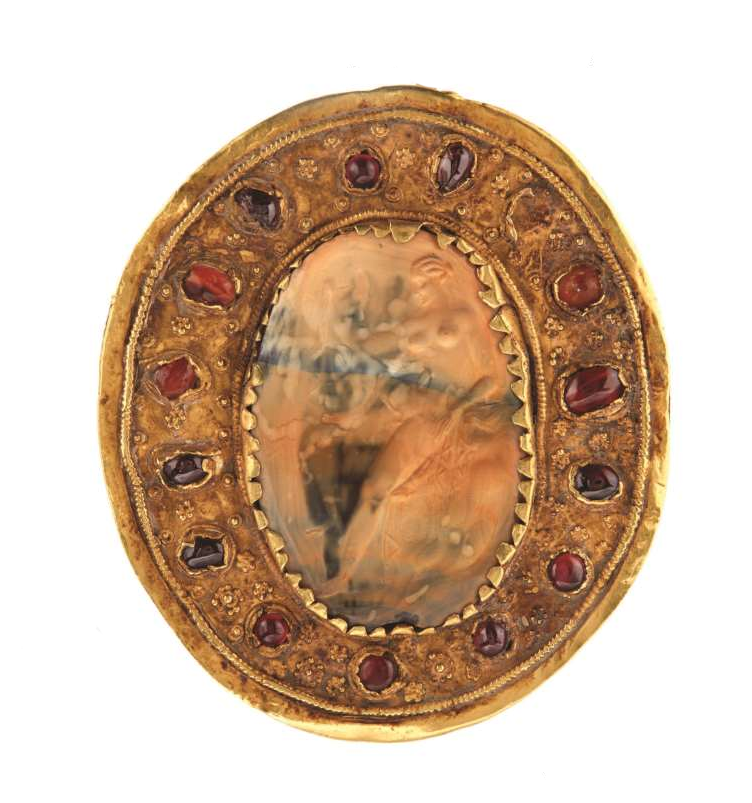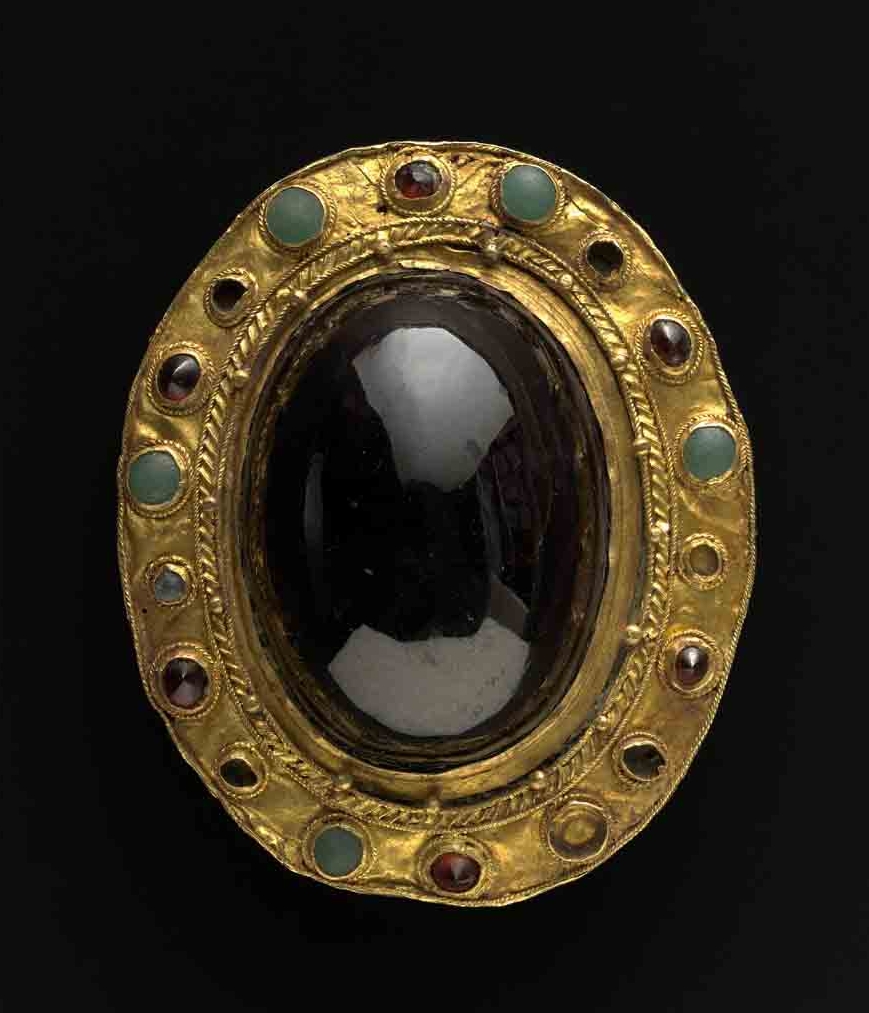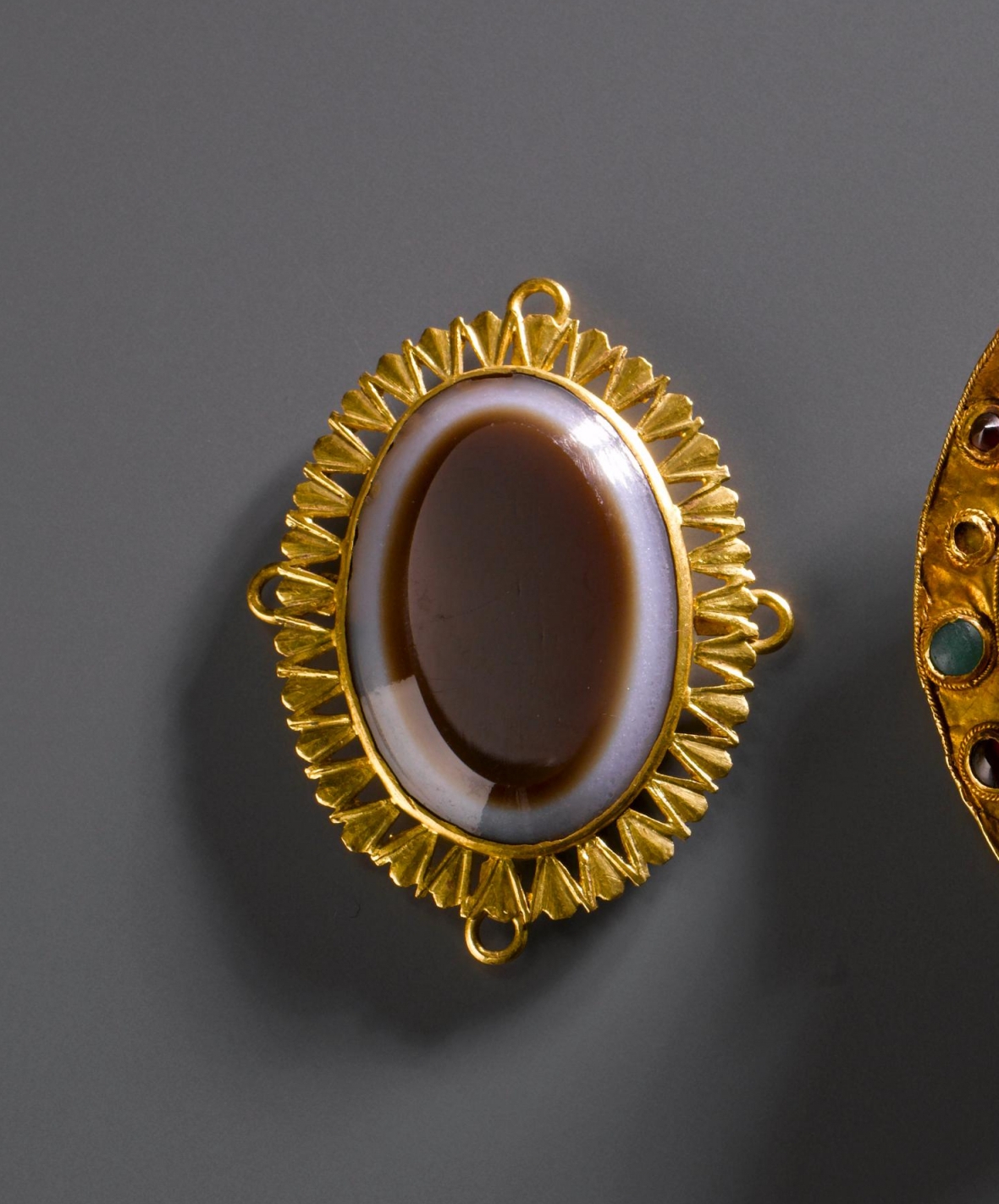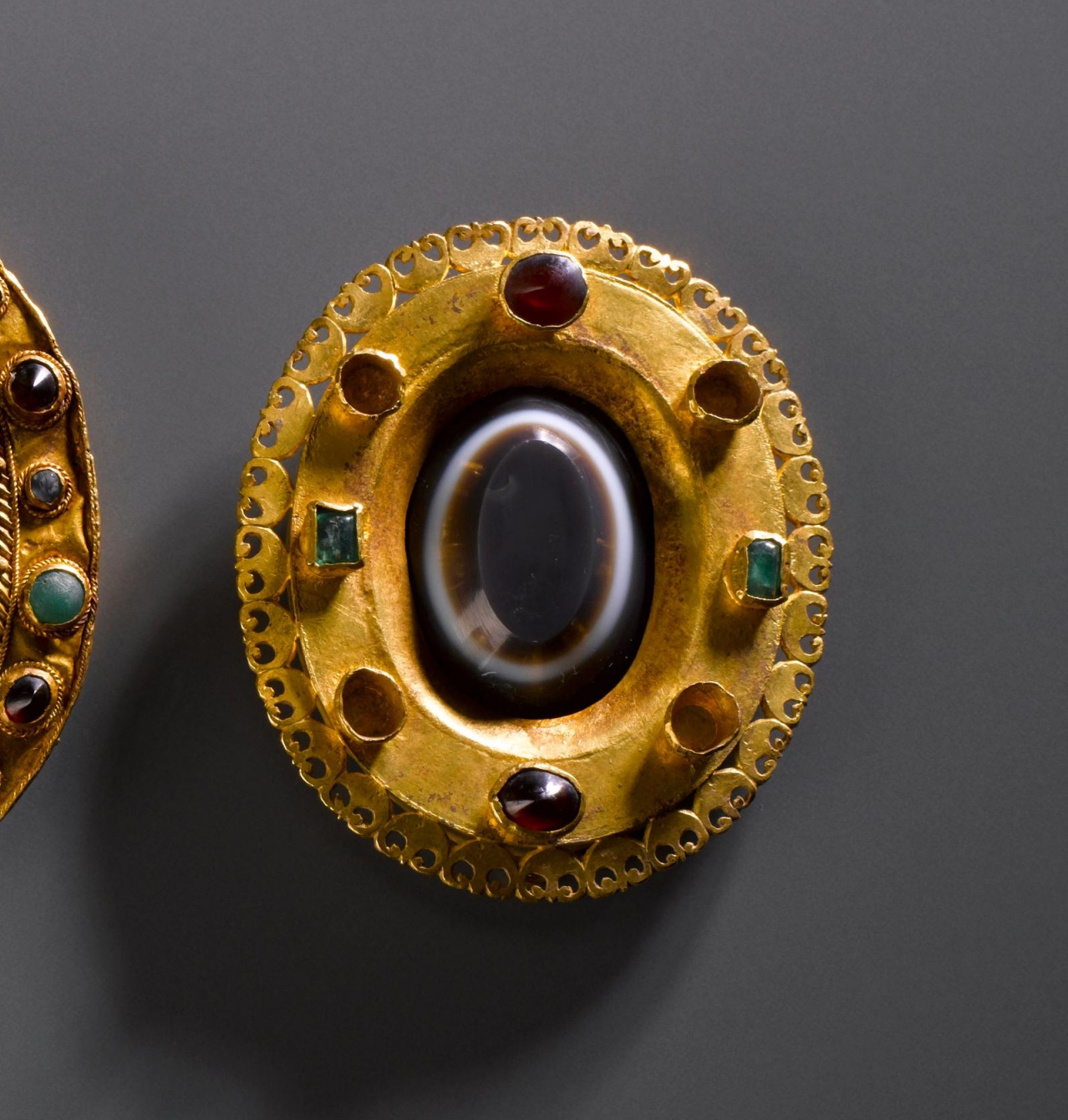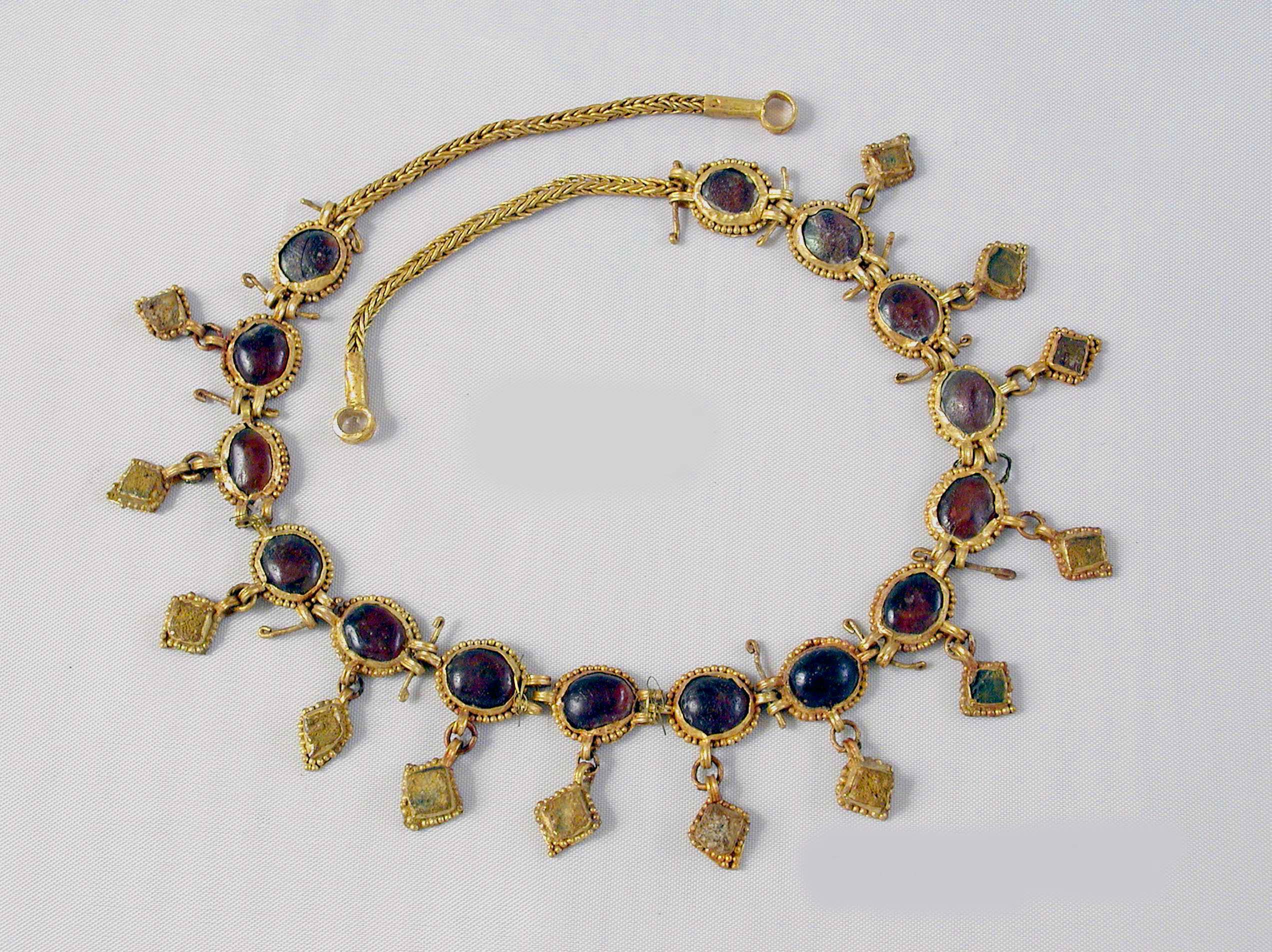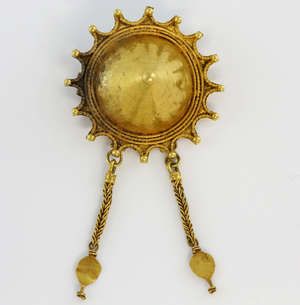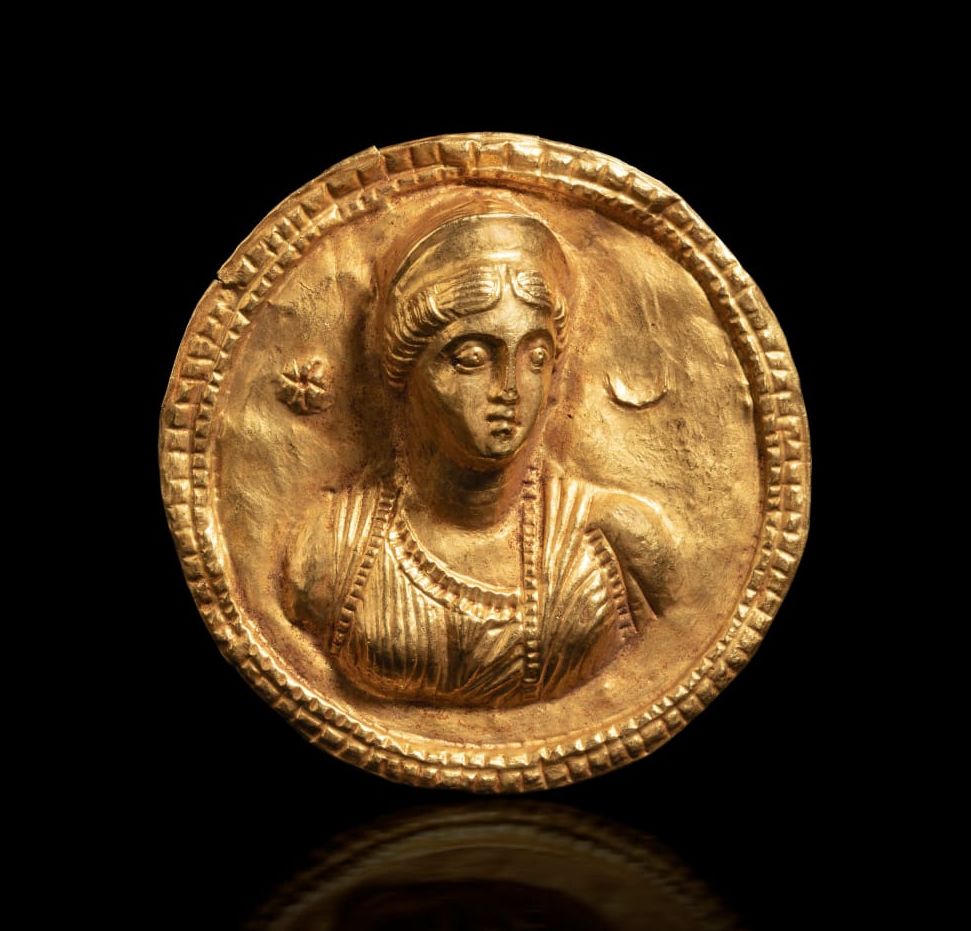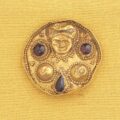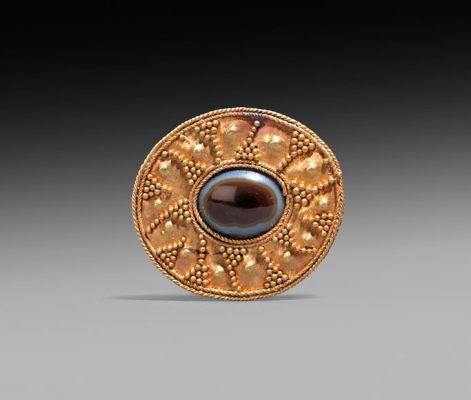
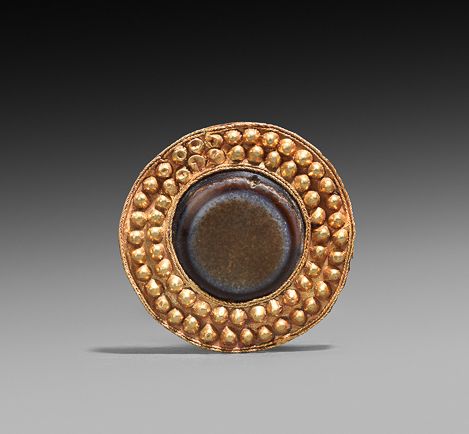
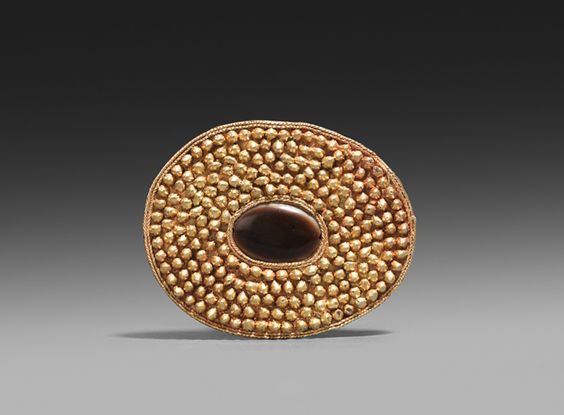

From the Rupert Wace Collection, gold with sardonyx and carnelian, described: „the Parthian gold pendants each have original loop fastenings, allowing them to be strung on a leather thong or gold chain”. Source http://cdclifestyle.com/posts/2014/11/24/timeless-treasures-at-rupert-wace-ancient-art-christmas-exhibition
There is a whole collection of that kind of Parthian jewelry „Ex. Anavian Family Collection acquired over 30 years ago by David and Henry Anavian, in Iran, prior to the Shahs departure”. All was sold at the auction in 2013 by the Arte Primitivo, Howard S. Rose Gallery http://arteprimitivo.com [some of the item were re-soled later by the Sands of Time Gallery]. Some of the ornaments are listed below, for the rest read the auction catalog >> https://www.arteprimitivo.com/catalog/auc68.pdf and https://www.arteprimitivo.com/catalog/auc69.pdf
The auction house describes them as brooches, but because they have the suspension loops on back side we can assume that all of them could have been be worn as pendants or used as the elements of a necklace or a horse harness.

https://www.arteprimitivo.com/scripts/detail.asp?LOT_NUM=137443
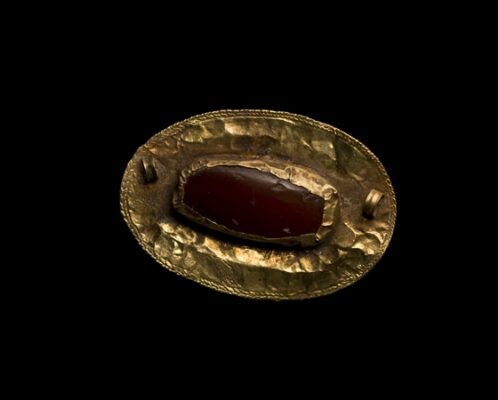
Parthian, Eastern Empire.
Period: Ca. 200 B.C.
Size: 6 x 3.8 cm
Gold, carnelian
Description: Ovular brooch made of sheet gold with central embedment of an orange carnelian stone, framed by a double row of applied granulation balls and a rope motif wire outer border. Two suspension loops on reverse.
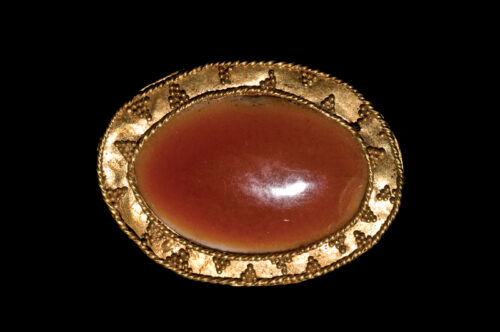
Photo ©Arte Primitivo, Howard S. Rose Gallery
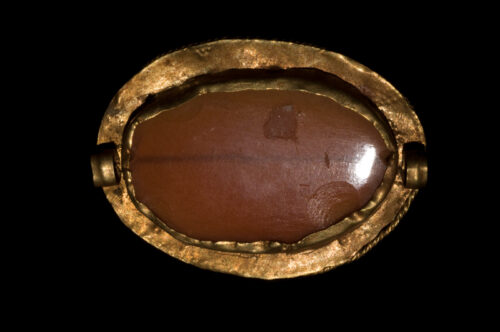
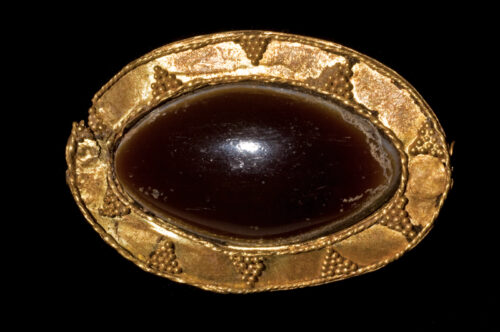
Photo ©Arte Primitivo, Howard S. Rose Gallery
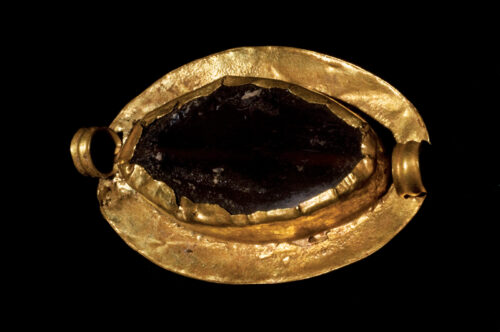
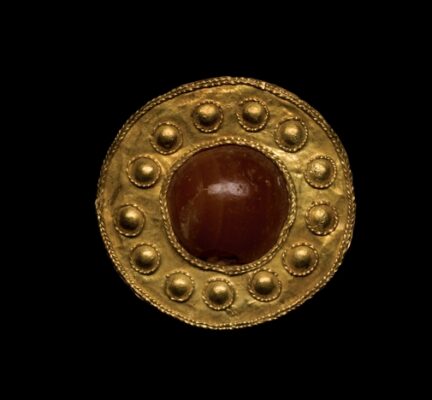
Photo ©Arte Primitivo, Howard S. Rose Gallery
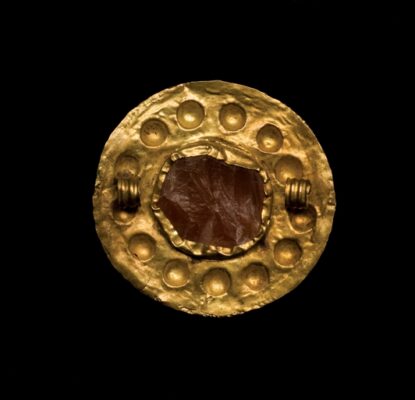
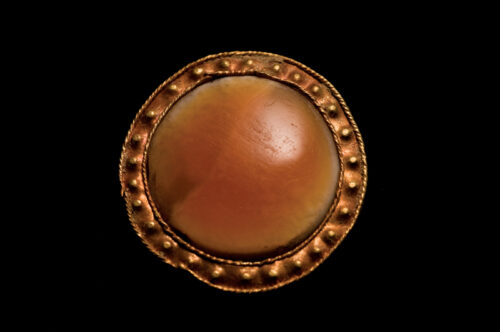
Photo ©Arte Primitivo, Howard S. Rose Gallery
diam. 2.7 cm
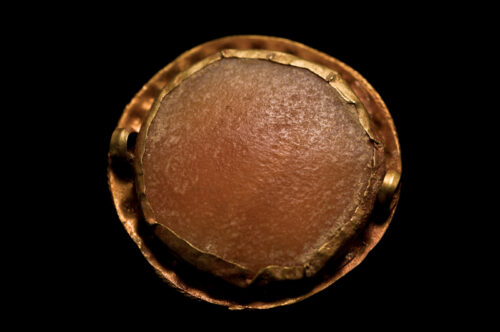
Pendants and brooches with the sardonyx [brown banded agate], grinded in the form of an eye. That kind of stones were used as amulets against the „Evil Eye” in ancient Mesopotamia. All these jewelry is described as Parthian, dated to 200 BCE – 200 CE.
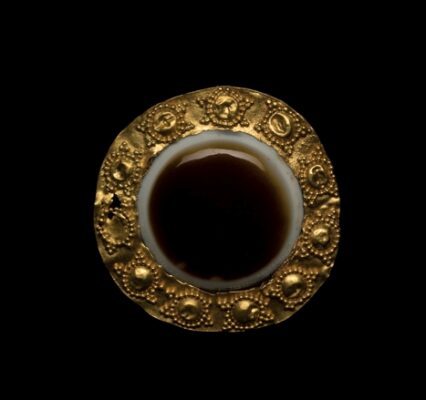
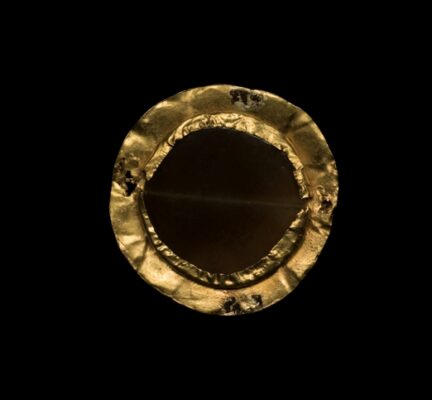

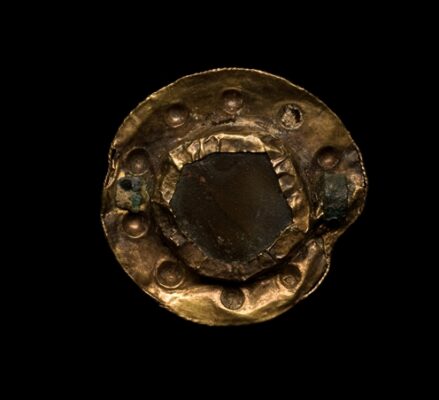
A Round Gold Brooch with Agate Inset, Parthian Period, ca. 200 BCE – 200 CE. Diameter: 4 cm
“Gold inset brooch with a round agate eye bead in brown and white. Wide gold border decorated with ten circular relief elements having granulated borders, outer and inner simple rope-like borders.”
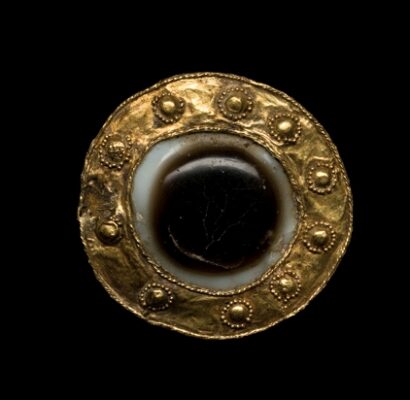

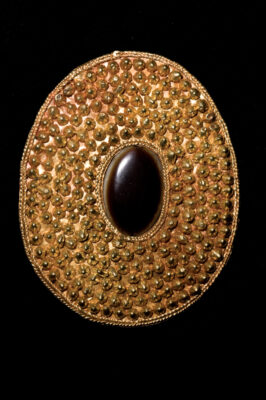
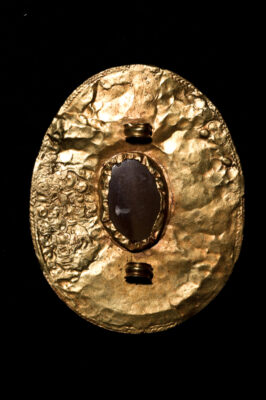
| “Hammered sheet gold, ovular brooch having two suspension loops on the back. Front with central embedment od banded agate, large cabochon bordered by five rows of large, applied grannular balls, and a rope motif wire outer border.” |
Eastern Empire.
Period: Ca. 200 B.C.
Size: 7.9 x 6.3 cm
https://www.arteprimitivo.com/scripts/detail.asp?LOT_NUM=137442

Photo ©Arte Primitivo, Howard S. Rose Gallery
https://www.arteprimitivo.com/scripts/detail.asp?LOT_NUM=137444
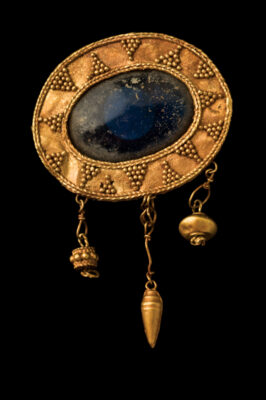

| Gold and glass brooch having an oval wide gold setting with triangular granulated decoration and braided gold border. Three gold danglers along the bottom edge. Set with a large, thin blue glass cabochon. Double attachment loops on the reverse. |
Parthian, Eastern Empire.
Period: Ca. 200 B.C.
Size: 3.2 x 5 cm with pendants
https://www.arteprimitivo.com/scripts/detail.asp?LOT_NUM=137448
Parthian Period, ca. 1st century BCE – 1st century CE
“Of rounded form, the pectoral features a prominent central eye agate, imbued, it was believed, with protective powers to ward off the evil eye and shield the wearer from illness and death. This agate has been carefully drilled across the center, and a small gold pin intricately runs the length of the stone in order to set it within a heavy, high-karat gold bezel. The bezel is finely edged with granulation, and embellished with five cabochon teardrop garnets, five cabochon rounded garnets, and one red glass cabochon, the latter no doubt a replacement in ancient times, for a lost garnet. Skillfully arranged between these gemstones are eleven raised gold bosses, all with granulation at the base. There are two suspension loops at the back for attachment.
The form of the pectoral and the method of inlaying are characteristic of Parthian jewelry, with such objects usually dating between the 1st and 3rd centuries. For a less elaborate example set as part of a necklace, see British Museum, object #W_1965-0215-1 https://www.britishmuseum.org.
Dimensions: Length: 7.2 cm, Width: 6.6 cm
Provenance: Private Australian collection acquired from the London trade in the early 1960s, thence by descent, thereafter private Virginia collection.”
